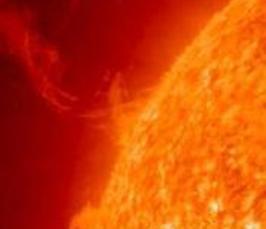ESP Online Seminar: The Magnetic Nature of the Umbra-Penumbra Boundary in Sunspots (J. Jurčák)
ESPOS
- Date: Jan 25, 2018
- Time: 11:00 AM - 12:00 PM (Local Time Germany)
- Speaker: Jan Jurčák
- Astronomical Institute of the Czech Academy of Sciences
- Location: Astronomical Institute of the Czech Academy of Sciences (broadcasted at MPS)
- Room: Aquila + Bootes
- Host: Andreas Lagg

Sunspots are the longest known manifestation of solar activity and their magnetic nature has been known for more than a century. Despite this, the boundary between umbrae and penumbrae, the two fundamental sunspot regions, has hitherto been solely defined by an intensity threshold. We now unveil the empirical law of the magnetic nature of the umbra-penumbra boundary in stable sunspots: an invariant vertical component of the magnetic field. We study the magnetic nature of umbra-penumbra boundaries in sunspots of different sizes, morphology, evolutionary stage, and phase of the solar cycle. We use a sample of 88 scans of Hinode/SOT spectropolarimeter to infer the magnetic field properties at the umbral boundaries. We define these boundaries by an intensity threshold and perform a statistically analysis of the magnetic field properties at these boundaries. We statistically prove that the umbra-penumbra boundary in stable sunspots is characterised by an invariant value of the vertical component of the magnetic field: The vertical component of the magnetic field strength does not depend on the umbra size, its morphology, and phase of the solar cycle. With statistical Bayesian inference, we find that the vertical component of the magnetic field strength is, with 99\% likelihood, in the range of 1849-1885 G with the most probable value of 1867 G. In contrast, the magnetic field strength and inclination averaged along individual boundaries are found to be dependent on the umbral size: The larger the umbra, the stronger and more horizontal the magnetic field at its boundary is.